Michael J. Behe's Blog, page 464
June 23, 2019
J. P. Moreland reasons his way to evidence for the soul
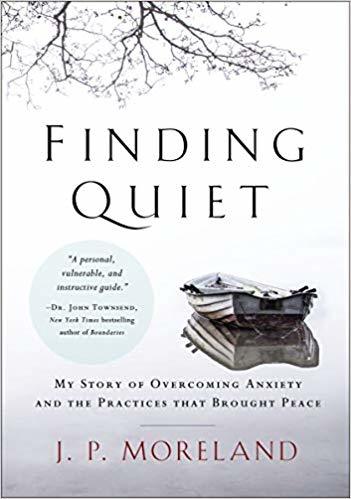
And captures his discoveries in a book, Finding Quiet: My Story of Overcoming Anxiety and the Practices that Brought Peace (May 2019), on overcoming anxiety and depression:
To find peace, he had to think carefully about the difference between the evolutionary materialist account of the human being and what he was actually experiencing. A partial transcript follows: J.P. Moreland: Evolutionary theory implies that we should be completely material beings. Darwin himself saw that to be true and the reason is because evolution is a purely physical story about how purely physical processes such as mutation and natural selection and genetic drift changed purely physical characteristics for reproductive advantage.
“Theologian battling depression reaffirms the existence of the soul” at Mind Matters News
See also: Can physics prove there is no free will? (neurosurgeon Michael Egnor)
Follow UD News at Twitter!
Copyright © 2019 Uncommon Descent . This Feed is for personal non-commercial use only. If you are not reading this material in your news aggregator, the site you are looking at is guilty of copyright infringement UNLESS EXPLICIT PERMISSION OTHERWISE HAS BEEN GIVEN. Please contact legal@uncommondescent.com so we can take legal action immediately.
Plugin by Taragana
Michael Egnor: The cowardice of science organizations on when life begins

The scientific issues regarding the beginning and nature of human life were settled in the early 19th century:
… the science regarding the beginning of human life is settled and has been settled for 200 years. There is no debate on the science. There remain profound questions of ethics, law, and public policy regarding respect for him in life, which are valid issues for debate. There remain no questions regarding the science of the beginning of human life.
Where are the major scientific organizations on this issue? Why has not the National Academy of Sciences, the American Association for the Advancement of Science, or the American Medical Association stated clearly and publicly the basic scientific fact that human life begins at fertilization? The answer is obvious: many scientists in these organizations are willing to do what it takes to advance their ideology, and scientists who do understand and embrace the truth about the beginning of human life are generally too cowardly to press the issue. It’s an enormous scandal.
Michael Egnor, “What the Abortion Debate Tells Us About Integrity in Science” at Evolution News and Science Today
Maybe it relates to foolish ideas about the origin of life in general.
See also: The junk science of the abortion lobby Fetuses not only experience pain but experience it more intensely than do adults (Michael Egnor)
Follow UD News at Twitter!
Copyright © 2019 Uncommon Descent . This Feed is for personal non-commercial use only. If you are not reading this material in your news aggregator, the site you are looking at is guilty of copyright infringement UNLESS EXPLICIT PERMISSION OTHERWISE HAS BEEN GIVEN. Please contact legal@uncommondescent.com so we can take legal action immediately.
Plugin by Taragana
Logic & First Principles, 22: Is there room for fresh (hylemorphically shaped?) thinking on minds, souls and bodies?
In recent weeks, UD has been looking at the logic of being of minded intelligence, especially, embodied intelligence. One of the pivotal insights is outlined by Victor Reppert — pardon a bit of review:
. . . let us suppose that brain state A [–> notice, state of a wetware, electrochemically operated computational substrate], which is token identical to the thought that all men are mortal, and brain state B, which is token identical to the thought that Socrates is a man, together cause the belief [–> concious, perceptual state or disposition] that Socrates is mortal. It isn’t enough for rational inference that these events be those beliefs, it is also necessary that the causal transaction be in virtue of the content of those thoughts . . . [But] if naturalism is true, then the propositional content is irrelevant to the causal transaction that produces the conclusion, and [so] we do not have a case of rational inference. In rational inference, as Lewis puts it, one thought causes another thought not by being, but by being seen to be, the ground for it. But causal transactions in the brain occur in virtue of the brain’s being in a particular type of state that is relevant to physical causal transactions.
As a part of that discussion, I put on the table, an extension of Derek Smith’s two-tier controller bio-cybernetic loop model, identifying the higher order controller with a supervisory oracle:
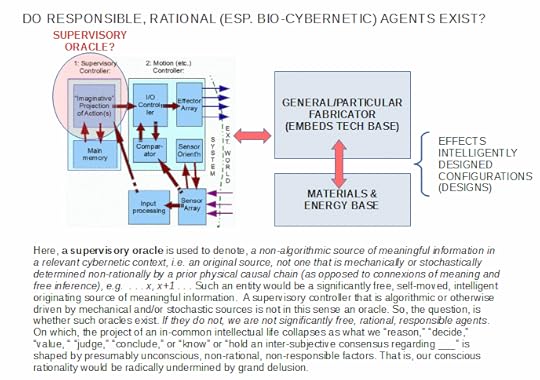
A core issue is, that computational substrates are just that: GIGO-limited dynamic-stochastic systems, not freely rational insight-driven intelligences. Where, a general dynamic-stochastic system can be envisioned on a generic, feedback model (feedback being central to having memory and reflexive cause-effect capacity):
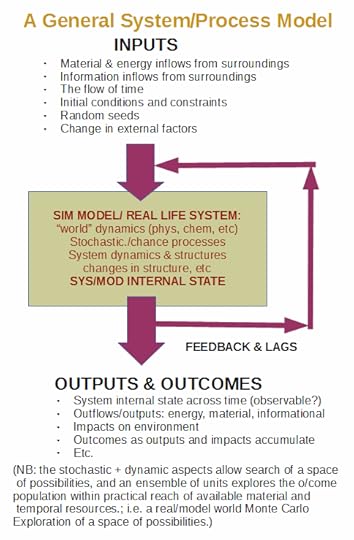
Are we looking at a contradiction, through self-referential undermining of the credibility of our claimed rationality and warrant, thus our knowledge base? No, though this does undermine evolutionary materialistic approaches, which would indeed reduce mindedness to computation and thus self-discredit. Cases in point, are legion, Alex Rosenberg and Crick being current exhibits A and B. Similar challenges go back through Skinner, Freud, Marx, Darwin and more. A jumped up monkey brain model is rife with the sort of difficulties JBS Haldane long since identified:
“It seems to me immensely unlikely that mind is a mere by-product of matter. For if my mental processes are determined wholly by the motions of atoms in my brain I have no reason to suppose that my beliefs are true. They may be sound chemically, but that does not make them sound logically. And hence I have no reason for supposing my brain to be composed of atoms. In order to escape from this necessity of sawing away the branch on which I am sitting, so to speak, I am compelled to believe that mind is not wholly conditioned by matter.” [“When I am dead,” in Possible Worlds: And Other Essays [1927], Chatto and Windus: London, 1932, reprint, p.209. (NB: DI Fellow, Nancy Pearcey brings this right up to date (HT: ENV) in a current book, Finding Truth.)]
But, isn’t there an equal problem, to account for how some ghost comes to possess and take control of the bio-cybernetic machine? Again, no, once we consider that quantum influence is possible so that a supervisory oracle can be present and effective. In this context, I have used the artifice — or, conceptual window — of asking us to ponder how a fifth dimension entity can intersect with any locus (in principle) in our usual four-dimensional spacetime framework, using LOCUS, L = (x,y,z,t,f).
Now, let us extend thoughts by way of Ks. Tomasz Stępień in a paper, “ANGEL IN “ THE CARTESIAN THEATRE ” – AQUINAS AND THE MIND – BODY PROBLEM”:
Already in the late 1960s and early 1970s, the standard explanation of the mind faced multiple con- tradictions and unanswered questions, thus reductive materialism was no longer the only option. Therefore, the thesis of the existence of the soul started to be perceived as a real alternative answer of how to get across the “explanatory gap” . . . .
To see why St Thomas Aquinas’ metaphysics of a human being is so useful to deal with the mind-body problem we must underline its uniqueness. His argu- ments on substantial unity were not so common in the Middle Ages and most of the scholars perceived such as approach as too Aristotelian. Such a view, after the condemnation of 219 theses in 1277, was even perceived as dangerous because it was almost commonly accepted that following the Philosopher in his assumptions about substantial unity makes the argumentation on immortality of the soul im- possible. The originality of Aquinas lays in the balance of simultaneous claims of substantial unity and his demonstration on immortality of the soul. So Aquinas’ view of a human being can be called biological since his claims on the indispen- sable role of the body are so radical. St Thomas not only claims that the body is not bad and unimportant but he: “goes much farther than that, insisting not only
that our bodies play a positive role in our lives, but that they are in fact essential to our continued existence” (Pasnau, 2012, p. 363) . . . .While intellectual activity, according to Aquinas, can be
performed without any change in the body (intellect and will do not have physical organs), sensual activity is always the activity of both the body and the soul. Aqui- nas concludes his demonstration by saying: “Since, then, sensation is an operation of man, but not proper to him, it is clear that man is not a soul only, but something composed of soul and body”. The opposite opinion, that the soul is man, leads to the necessary conclusion that sensual activity is the activity of the soul, which only uses the body as a tool. This was exactly the opinion of Plato with whom St Thomas
disagree (ST I, q. 75, a. 4, co.) 5 . Aquinas elaborates on those claims demonstrating that the soul is connected with the body as its form, and he once again underlines refuting Plato’s conceptions: “…that it is one and the same man who is conscious both that he understands, and that he senses. But one cannot sense without a body: therefore the body must be some part of man” (ST I, q. 75, a. 1, co.) 6 .
In short, the mind/soul and body are intimately interconnected so that a human being forms as an embodied entity (though, on a traditional view of death, not inseparably connected . . . the soul/mind is tied to the body in the process of conception, gestation and birth, but it has distinct aspects and identity and both are equally part of what it means to be a whole human being). Feser amplifies:
. . . someone could have good philosophical reasons for thinking that there must be some way to combine hylemorphism and dualism.
That, I submit, is precisely the position Aquinas finds himself in. As an Aristotelian, he is convinced that the human soul is the form of the living human body. It is therefore responsible for all the various human capacities — nutrition, reproduction, growth, sensation, appetite, locomotion, intellect, and volition — in just the way the souls of plants and non-human animals are responsible for their capacities. But Aquinas is also convinced that our purely intellectual capacities cannot have a corporeal organ. The reason is that he endorses philosophical arguments for the immateriality of the intellect of the sort that go back to Plato and Aristotle. That much gives him grounds for concluding that the soul carries out immaterial operations alongside its corporeal ones. Add to this the (independently motivated) Scholastic thesis that agere sequitur esse — that “action follows being,” so that the way a thing acts reflects the manner in which it exists — and we have grounds for concluding that, though the soul is the form of the body, it must in some way have a kind of subsistent immaterial existence.
Biologically rooted, biologically connected, but distinct and not inseparable. Where — most relevant for our purposes — mindedness is essentially non-computational, not tied inseparably to organisation and dynamic-stochastic functioning of a GIGO-limited, inherently non-insightful computational substrate.
Gyula Klima adds (and Wayback machine preserves . . . the Internet is annoyingly non-permanent) — and pardon how this begins to be technical, we are dealing with technical issues:
As St. Thomas reminds us:“… nothing prevents some things from being many in some respect and being one in another. Indeed, all sorts of things that are many are one in some respect, as Dionysius says in the last chapter of On Divine Names. But we have to be aware of the difference that some things are many absolutely, and one in some respect, while the case is the reverse with others. Now something is said to be one in the same way as it is said to be a being. But a being absolutely speaking is a substance, while a being in some respect is an accident, or even [only] a being of reason. So whatever is one in substance, is one absolutely speaking, yet many in some respect. For example, a whole in the genus of substance, composed of its several integral or essential parts, is one absolutely speaking, for the whole is a being and a substance absolutely speaking, while the parts are beings and substances in the whole. Those things, however, which are diverse in substance, and one by accident, are diverse absolutely speaking, and one in some respect, as many humans are one people, or many stones are one heap; and this is the unity of composition or order. Likewise, many individuals that are one in genus or species are many absolutely speaking, and one with respect to something, for to be one in genus or species is to be one with respect to reason. [For example,] in the genus of natural things, some whole is composed from matter and form, as man from body and soul, who is one natural being, although he has a multitude of parts […]”[17]
So, although it is up to us to assign our criteria of distinguishing the integral parts making up some integral whole, which is, again, marked off by us as being the whole constituted by those parts, there will nevertheless be some absolute standard according to which the mereological constitution of the whole is not dependent on us, namely, the ontological status of the parts so distinguished and of the whole thus marked off. That is to say, even if we are absolutely free to regard a heap of stones as one, and an individual stone as a part of this one, nevertheless it is obvious that the unity of the individual stones is not of the same kind as the unity of the heap. For the heap is not a being in the same sense as the stones are, since precisely in that sense in which a stone is one being the heap is not one being, but rather it is several beings. Again, we are absolutely free to regard one half of one of these stones as one part of this one stone and the other half as the other part of the same stone, yet, it is clear that the unity of each of its halves is not the same as the unity of the stone, for in the sense in which one half of it is one being, the stone is not one being, but two beings, whereas in the sense in which the stone is one being, its halves are not even beings at all. For the stone is actually a being in its own right, while neither of its halves is actually a being in its own right; it only can be a being in its own right if the stone is actually cut into those two halves. But as the stone is actually undivided, it is one substance actually, while its two halves are two substances only potentially.[18]
. . . . it is clear that the term `body’ in the first sense, in which it is the genus of all bodies, since it is predicable of a whole human being and not only of some part of him or her, signifies the unique substantial form of any human being, and so what it signifies in human beings, their corporeity, coincides with their rational soul.[19] In this sense, therefore, we do not distinguish the body from the soul as a part from another part, but as the whole from one of its parts.[20] But this part of this whole, namely, the soul, is not distinguished from the other parts on the basis of dividing the quantity of this whole. Rather, the distinction is made on the basis of the different perfections, indicating the different modes of existence that we conceive in this whole, namely, the spatio-temporal, material mode of existence which this body has in common with all bodies, as opposed to the mode of existence which enables this body to perform several sorts of vital functions, that is, life, which it has in common with all living beings. But once we have distinguished these two modes of existence, namely, material, spatio-temporal existence on the one hand, and life on the other, we can obviously use different names, or the same names in different senses, to signify the substantial forms on account of which a thing has one of these modes of existence, or the other, or both in its own unique act of substantial being. So if we distinguish corporeity as that substantial form on account of which whatever has it exists in a material, spatio-temporal manner, whether the thing in question is alive or not, then the corporeity thus distinguished will clearly coincide in all living bodies with their soul, conceived as that substantial form on account of which whatever has this form is alive, whether it is a body or not. Therefore, in this non-exclusive sense, both the corporeity thus conceived and the soul thus conceived are nothing but the form of the whole, that is, the essence or quiddity of a living body. But if we conceive of corporeity as that on account of which whatever has it exists in a spatio-temporal manner, but is not alive, the corporeity thus conceived cannot coincide with the substantial form of a living body, so this conception of corporeity can mark out only some part of the essence of a living body. Also, if we conceive of the soul as that on account of which whatever has it is alive but is not a body, the concept of soul thus conceived can mark out only some part of a living body, in which both material existence and life are united in its single act of substantial existence, its spatio-temporal, material life.
Of course, spatio-temporality and life in themselves are not incompatible, which is shown by the manifest existence of living bodies. However, they do not entail each other either, as is shown by the manifest existence of lifeless bodies as well as by the at least conceivable existence of living immaterial substances. Therefore, it should come as no surprise that we can form both the non-exclusive and the exclusive concepts of those substantial forms on account of which any substance has either life or spatio-temporality or both.
In short, the concept of an inherent but divisible unity is not incoherent. Man = body + soul is coherent, and the concept that the body without the soul is dead is also coherent. Likewise, the distinction between a supervisory oracle interacting with the bio-cybernetic loop and its being inherently non-algorithmic, not driven and controlled by dynamic-stochastic interactions according to some computational architecture, is also coherent.
In this context, it is even coherent to make a different usage, to view us as embodied spiritual beings, with soulish faculties as arising from the interface. That is, “spirit” speaks from an aspect that views a distinction that an aspect of our being is capable of distinctively spiritual functions such as having an awareness of and interacting with God. In that context, the sort of picture sketched by Clarence Larkin and others is not just a dismissible figment — identifying, here, the spiritual facet with our core, distinct being (that which marks us as unique relative to animals, which are also embodied, bio-cybernetic entities with souls, albeit apparently without the full panoply of rational, responsible faculties we have):
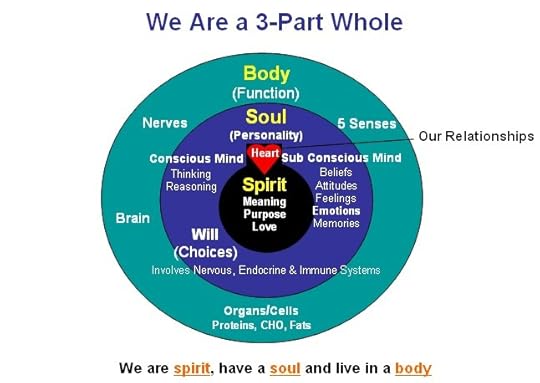 A typical, tripartite man Christian viewpoint. Note, heart and mind sometimes stand in for the inner man. The body is the outer man, on this frame. Hindus and those influenced by hindu thought will have a rather different view. The classic Greek view talks about body and soul. There are many, diverse perspectives.
A typical, tripartite man Christian viewpoint. Note, heart and mind sometimes stand in for the inner man. The body is the outer man, on this frame. Hindus and those influenced by hindu thought will have a rather different view. The classic Greek view talks about body and soul. There are many, diverse perspectives.How does all of this connect to the intelligence in the design inference?
First, it helps us identify the sort of intelligence in mind: a supervisory oracle that is inherently non-algorithmic and capable of rational, responsible insight. In that context, the point that such an entity may interact with matter (perhaps through quantum influence) renders the mind-matter gap moot. Third, the point that such may be disembodied points to what may exist antecedent to a material world, which arguably had a finitely remote beginning, on grounds of the challenge of reduction to now from the transfinitely remote past.
In short, a designing intelligence that is rationally insightful, non-computational (i.e. not a dynamic-stochastic process on a computational substrate) is not incoherent. Designers do exist and are credibly actually rational and responsible, but those characteristics are inherently not reducible to dynamic-stochastic processes on a computational substrate. So, we have to take the possibility of a “fifth dimensional” supervisory oracle seriously; even in the teeth of a dominant but incoherent evolutionary materialistic school of thought.
This, as a side-point, refutes the attempt to tie inference to design as intelligently directed configuration (and thus to intelligent action, thence onward to agents of such action) to embodiment. Computational substrates do not credibly account for designing intelligence. We must be open to there being more to reality than the obvious, physical realm. On pain, of self-referential incoherence.
Coming back, we also see why inference to design as process is not inference to a particular designer. For, obviously, different designers are possible. Empirical evidence that intelligently directed configuration has happened does not directly implicate any particular “suspect.” Other circumstances have to be considered to get to that.
So, too, yes, there is room for fresh thinking on minds, souls, spirits and bodies. END
Copyright © 2019 Uncommon Descent . This Feed is for personal non-commercial use only. If you are not reading this material in your news aggregator, the site you are looking at is guilty of copyright infringement UNLESS EXPLICIT PERMISSION OTHERWISE HAS BEEN GIVEN. Please contact legal@uncommondescent.com so we can take legal action immediately.
Plugin by Taragana
June 22, 2019
J. P. Moreland on when it is right to reject “science”
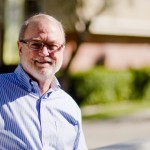
In connection with five myths about science:
Most Christians would accept treatment recommendations for cancer if 95% of oncologists embraced that treatment as the best. But 95% of biologists, paleontologists and scientists in related areas accept the general theory of evolution, but most Christians do not. Are Christian views regarding evolution rational and, if so, why? There are at least four criteria for when it is rational to go against the overwhelming percentage of experts in an area of science, e.g. those who accept evolution:
(1) Make sure there is not an alternative interpretation of the Bible that is interpretively reasonable and that resolves the tension.
(2) The presence of a band of highly trained, academically qualified scholars with a good track record for publishing in top journals or with highly regarded book publishers, and who are unified in rejecting the view held by even a vast majority of the relevant experts.
(3) There are good historical, sociological, or theological explanations for why the expert majority holds to the problematic view (for example, evolution) instead of their adherence to the problematic view being largely a rational commitment based on a lot of good arguments and strong evidence.
(4) Given that Christianity is a highly rational worldview with much evidential and argumentative support, any view that cuts against central components of a Christian worldview should be rejected precisely due to that fact.
J. P. Moreland, “Five Myths About Science” at Crossway
Thoughts?
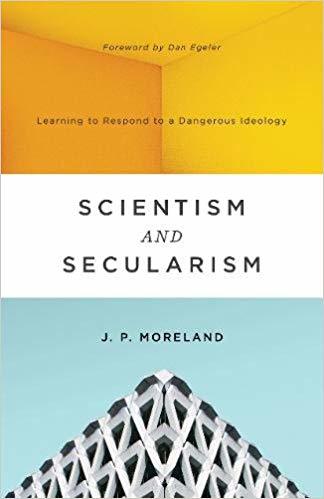
J. P. Moreland is the author of Scientism and Secularism: Learning to Respond to a Dangerous Ideologyand, more recently, Finding Quiet.
See also: Theologian, battling depression, reaffirms the existence of the soul J. P. Moreland reasons his way to the evidence and captures his discoveries in a book.
Copyright © 2019 Uncommon Descent . This Feed is for personal non-commercial use only. If you are not reading this material in your news aggregator, the site you are looking at is guilty of copyright infringement UNLESS EXPLICIT PERMISSION OTHERWISE HAS BEEN GIVEN. Please contact legal@uncommondescent.com so we can take legal action immediately.
Plugin by Taragana
How life shaped Earth, with a hat tip to Lynn Margulis
With a hat tip to Lynn Margulis, a biologist who was not really a Darwinian:
The more we look through a Gaian lens, the more we see that nearly every aspect of our planet has been biologically distorted beyond recognition. Earth’s rocks contain more than 4,000 different minerals (the crystalline molecules that make up rocks). This is a much more varied smorgasbord of mineral types than we have seen on any other world. Geochemists studying the mineral history of Earth have concluded that by far the majority of these would not exist without the presence of life on our planet. So, on Earth’s life altered surface, the very rocks themselves are biological byproducts. A big leap in this mineral diversity occurred after life oxygenated Earth’s atmosphere, leading to a plethora of new oxidized minerals that sprinkled colorful rocks throughout Earth’s sediments. Observed on a distant planet, such vast and varied mineral diversity could be a sign of a living world, so this is a potential biosignature (or Gaiasignature) we can add to the more commonly cited Lovelock criterion of searching for atmospheric gases that have been knocked out of equilibrium by life. In fact, minerals and life seem to have fed off each other going all the way back to the beginning. Evidence has increased that minerals were vital catalysts and physical substrates for the origin of life on Earth. Is it really a huge leap, then, to regard the mineral surface of Earth as part of a global living system, part of the body of Gaia?
David Grinspoon, “Why Most Planets Will Either Be Lush or Dead” at Nautilus
Grinspoon argues that life helping shape Earth means that most planets will either be lush or dead.
Maybe. David, find us one that isn’t dead and we promise to get back to you soon.
Note: Lynn Margulis: “(born March 5, 1938, Chicago, Illinois, U.S.—died November 22, 2011, Amherst, Massachusetts), American biologist whose serial endosymbiotic theory of eukaryotic cell development revolutionized the modern concept of how life arose on Earth.” –Britannica
See also: What becomes of science when the evidence does not matter? (fine-tuning)
Follow UD News at Twitter!
Copyright © 2019 Uncommon Descent . This Feed is for personal non-commercial use only. If you are not reading this material in your news aggregator, the site you are looking at is guilty of copyright infringement UNLESS EXPLICIT PERMISSION OTHERWISE HAS BEEN GIVEN. Please contact legal@uncommondescent.com so we can take legal action immediately.
Plugin by Taragana
Journal Science wouldn’t publish failed replication of “liberal vs conservative” brain study
 What’s hot? What’s not?/Niklas Bildhauer, Wikimedia
What’s hot? What’s not?/Niklas Bildhauer, WikimediaIt was a widely reported “pathbreaking and provocative” study:
For decades, political scientists and psychologists have tried to understand the psychological roots of ideological differences. The piece published in Science offered some clues as to why liberals and conservatives differ in their worldviews. Perhaps it has to do with how the brain is wired, the researchers suggested—specifically, perhaps it’s because conservatives’ brains are more attuned to threats than liberals’. It was an exciting finding, it helped usher in a new wave of psychophysiological work in the study of politics, and it generated extensive coverage in popular media. In 2018, 10 years after the publication of the study, the findings were featured on an episode of NPR’s Hidden Brain podcast.
Kevin Arceneaux, Bert N. Bakker, Claire Gothreau, and Gijs Schumacher, “We Tried to Publish a Replication of a Science Paper in Science. The Journal Refused.” at Slate
But qualified researchers who wanted to replicate it couldn’t.
We drafted a paper that reported the failed replication studies along with a more nuanced discussion about the ways in which physiology might matter for politics and sent it to Science. We did not expect Science to immediately publish the paper, but because our findings cast doubt on an influential study published in its pages, we thought the editorial team would at least send it out for peer review.
It did not. About a week later, we received a summary rejection with the explanation that the Science advisory board of academics and editorial team felt that since the publication of this article the field has moved on and that, while they concluded that we had offered a conclusive replication of the original study, it would be better suited for a less visible subfield journal.
Kevin Arceneaux, Bert N. Bakker, Claire Gothreau, and Gijs Schumacher, “We Tried to Publish a Replication of a Science Paper in Science. The Journal Refused.” at Slate
The researchers say they begged the journal to reconsider but “We were rebuffed without a reason and with a vague suggestion that the journal’s policy on handling replications might change at some point in the future.”
That’s how the story ended up at Slate.
But is anyone really surprised? Maybe these days it’s only science if it tells Top People what they need to believe.
See also: Could the replication crisis be good for science?
and
Does liberal bias deepen the replication crisis in psychology? Consider the sheer number of ridiculous Sokal hoaxes that have played psychology journals. That would only be possible in an environment that is so overwhelmingly of one persuasion that few academics step back and say things like “What? ‘Misgendering’ dogs? This is ridiculous! They daren’t because someone’s feelings might be hurt.
Follow UD News at Twitter!
Copyright © 2019 Uncommon Descent . This Feed is for personal non-commercial use only. If you are not reading this material in your news aggregator, the site you are looking at is guilty of copyright infringement UNLESS EXPLICIT PERMISSION OTHERWISE HAS BEEN GIVEN. Please contact legal@uncommondescent.com so we can take legal action immediately.
Plugin by Taragana
First-ever natural narwhal-beluga hybrid found, has bizarre teeth
From ScienceDaily:
A team of researchers has compiled the first and only evidence that narwhals and beluga whales can breed successfully. DNA and stable isotope analysis of an anomalous skull from the Natural History Museum of Denmark has allowed researchers to confirm the existence of a narwhal-beluga hybrid.
The hybrid’s skull was found on the roof of a hunter’s toolshed in Greenland.
“As far as we know, this is the first and only evidence in the world that these two Arctic whale species can interbreed. Based on the intermediate shape of the skull and teeth, it was suggested that the specimen might be a narwhal-beluga hybrid, but this could not be confirmed. Now we provide the data that confirm that yes — it is indeed a hybrid,” says Eline Lorenzen, evolutionary biologist and curator at the University of Copenhagen’s Natural History Museum of Denmark. Lorenzen led the study, which was published today in Scientific Reports.
Using DNA and stable isotope analysis, the scientists determined that the skull belonged to a male, first-generation hybrid between a female narwhal and male beluga.
The hybrid’s skull was considerably larger than that of a typical narwhal or beluga. But the teeth were markedly different. Whereas narwhals have only one or rarely two long spiraling tusks, belugas have a set of uniform conical teeth that are aligned in straight rows. The hybrid skull has a set of long, spiraling and pointed teeth, that are angled horizontally.
“This whale has a bizarre set of teeth. The isotope analysis allowed us to determine that the animal’s diet was entirely different than that of a narwhal or beluga — and it is possible that its teeth influenced its foraging strategy. Whereas the other two species fed in the water column, the hybrid was a bottom dweller,” according to Mikkel Skovrind, a PhD student at the Natural History Museum and first author of the paper.
Paper. (open access) – Mikkel Skovrind, Jose Alfredo Samaniego Castruita, James Haile, Eve C. Treadaway, Shyam Gopalakrishnan, Michael V. Westbury, Mads Peter Heide-Jørgensen, Paul Szpak, Eline D. Lorenzen. Hybridization between two high Arctic cetaceans confirmed by genomic analysis. Scientific Reports, 2019; 9 (1) DOI: 10.1038/s41598-019-44038-0 More.
For all we know, this could be common. If it’s a bottom dweller, who was looking? Maybe hybridization plays a bigger role in evolution than we supposed. And then schoolbook Darwinism plays a smaller one.
See also: Bird, Tested And Released, Turned Out To Be A Hybrid Of Three Species
Is The Recently Cited Hybrid Dolphin-Whale A “New Species”? No.
and
A physicist looks at biology’s problem of “speciation” in humans
Follow UD News at Twitter!
Copyright © 2019 Uncommon Descent . This Feed is for personal non-commercial use only. If you are not reading this material in your news aggregator, the site you are looking at is guilty of copyright infringement UNLESS EXPLICIT PERMISSION OTHERWISE HAS BEEN GIVEN. Please contact legal@uncommondescent.com so we can take legal action immediately.
Plugin by Taragana
June 21, 2019
“Texas Sharpshooter Fallacies” produce bad science data
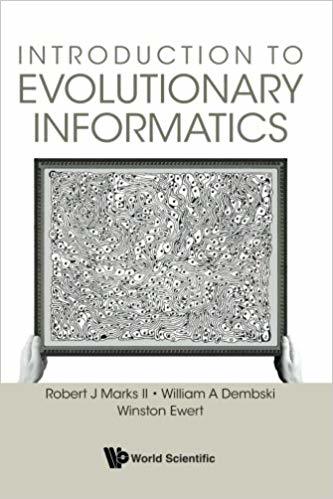
Robert J. Marks, author with design theorist William Dembski and Winston Ewert of Introduction to Evolutionary Informatics talks with Gary Smith, author The AI Delusion, about how, in general, based data is produced
Smith: Texas Sharpshooter Fallacy # 1 is that I’m going to prove what a great shot I am and so I stand outside a barn and then I go and paint a thousand targets on the barn and I fire my gun and what do you know, I am lucky, I hit a target. And then I go and erase all the other targets and I say, look, I hit the target. And, of course, it’s meaningless, because, with so many targets, I’m bound to hit something… So the Texas Sharpshooter Fallacy #1 is reporting lots and lots of different theories and reporting the one that seems confirmed by the data and not telling anybody that you tested thousands of other theories.
“Can AI Combat Misleading Medical Research?” at Mind Matters News
https://episodes.castos.com/mindmatters/Mind-Matters-035-Gary-Smith.mp3
That sounds like so many theories about the origin of the human brain.
Copyright © 2019 Uncommon Descent . This Feed is for personal non-commercial use only. If you are not reading this material in your news aggregator, the site you are looking at is guilty of copyright infringement UNLESS EXPLICIT PERMISSION OTHERWISE HAS BEEN GIVEN. Please contact legal@uncommondescent.com so we can take legal action immediately.
Plugin by Taragana
New robotic device is controlled only by thought, no brain implant
It could help people with movement disorders, without surgery:
Beyond that, such research raises a philosophical question: If the mind is an illusion, how can it act directly on external things, by the force of decision-making alone?
“New Mind-Controlled Robot Arm Needs No Brain Implant” at Mind Matters News
See also: The placebo effect is real,not a trick But the fact that the mind acts on the body troubles materialists. Such facts, they say, require revision.
Follow UD News at Twitter!
Copyright © 2019 Uncommon Descent . This Feed is for personal non-commercial use only. If you are not reading this material in your news aggregator, the site you are looking at is guilty of copyright infringement UNLESS EXPLICIT PERMISSION OTHERWISE HAS BEEN GIVEN. Please contact legal@uncommondescent.com so we can take legal action immediately.
Plugin by Taragana
The same genes code for legs as for tentacles
Nature Magazine reports that and moves on:
Cuttlefish and their kin form tentacles by deploying the same genes that direct the growth of arms in humans and legs in spiders…
The results suggest that genetic programs driving appendage development have been conserved for more than 500 million years, even though the appendages themselves have not. “The master genes that sculpt tentacles and legs alike” at Nature
They’ll be back to us when they come up with a no-design story.
Follow UD News at Twitter!
See also: Stasis: Life goes on but evolution does not happen
Copyright © 2019 Uncommon Descent . This Feed is for personal non-commercial use only. If you are not reading this material in your news aggregator, the site you are looking at is guilty of copyright infringement UNLESS EXPLICIT PERMISSION OTHERWISE HAS BEEN GIVEN. Please contact legal@uncommondescent.com so we can take legal action immediately.
Plugin by Taragana
Michael J. Behe's Blog
- Michael J. Behe's profile
- 219 followers



